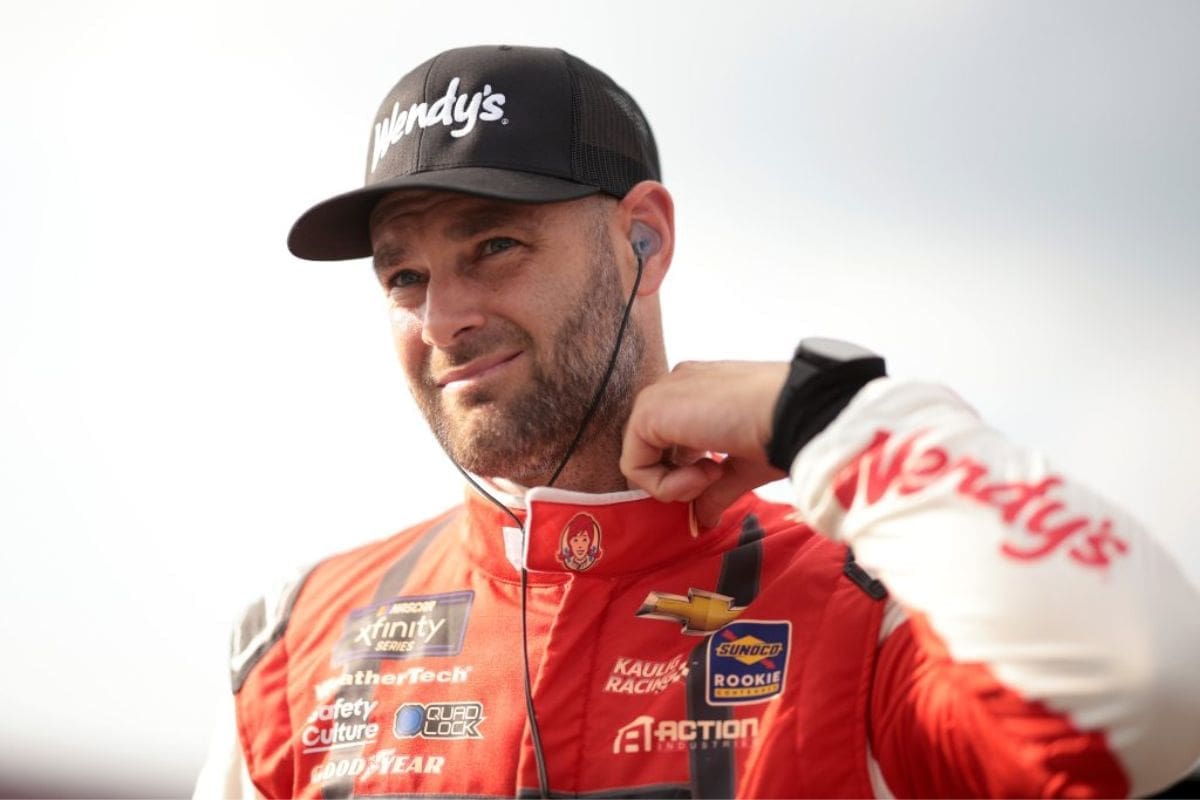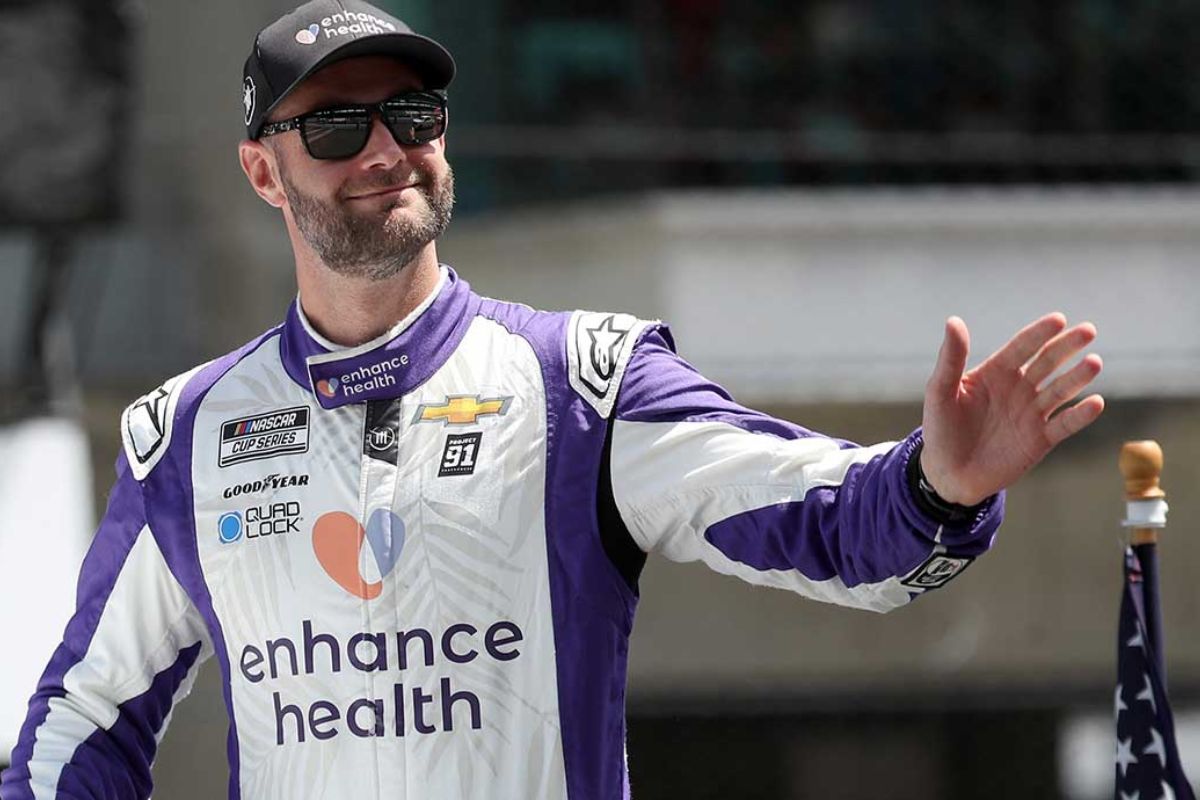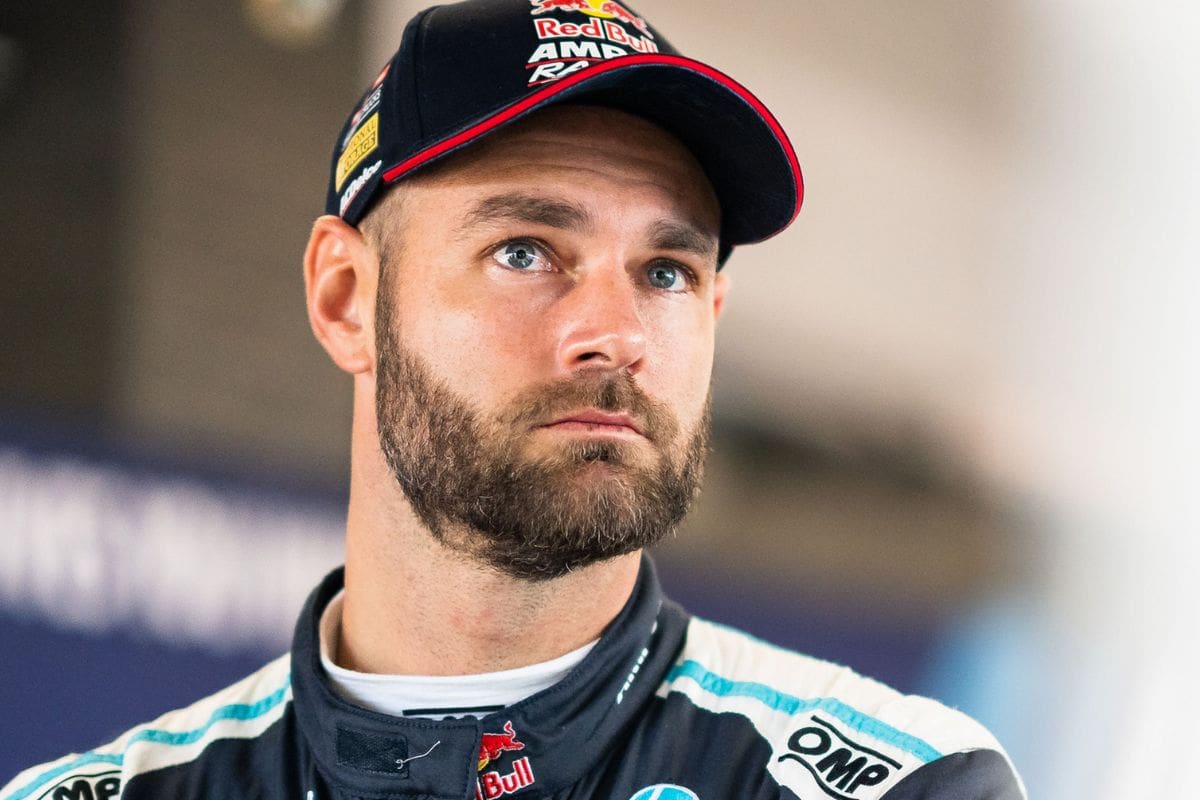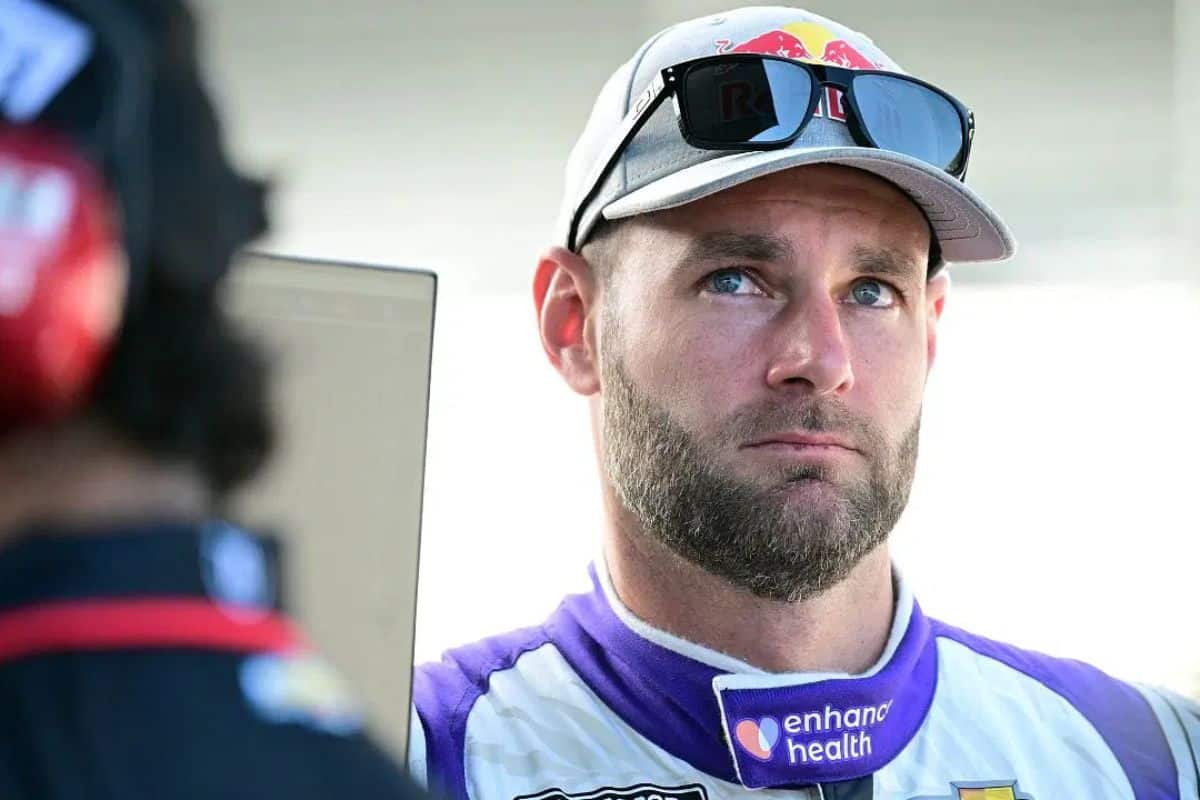SVG’s Solution for Sonoma Turn 11: SVG’s proposal for addressing the safety concerns at Sonoma‘s Turn 11 has garnered significant attention, particularly his advocacy for alternatives to the concrete wall, such as larger curbs and astro-turf. By focusing on energy absorption and deceleration, SVG‘s recommendations aim to improve driver safety and reduce the severity of collisions. This initiative not only highlights the critical need for improved safety measures but also opens up a broader conversation about the future of track design and driver protection in motorsport.
Key Highlights
- SVG suggests using larger curbs or astro-turf to enhance safety at Turn 11.
- He believes these alternatives offer better energy absorption and deceleration than a concrete wall.
- SVG’s proposals aim to reduce collision severity and improve driver safety.
- The alternatives could provide a safer, more forgiving barrier during incidents.
- Implementing these solutions could maintain operational efficiency while enhancing safety standards.
SVG’s Critique of Turn 11 Changes at Sonoma
Shane van Gisbergen (SVG) has voiced significant concerns over NASCAR’s recent decision to replace the tire barriers at Sonoma’s turn 11 with a white wall, arguing that this modification compromises driver safety. SVG, a decorated figure in motorsport, emphasizes that the removal of tire barriers—an important safety feature—poses an increased risk of severe impact injuries. His critique is grounded in the belief that the white wall, while perhaps aesthetically or operationally beneficial, fails to provide the same level of energy absorption and vehicle deceleration that tire barriers offer.
SVG’s concerns are not just rooted in theoretical safety principles but are informed by his extensive experience and acute understanding of track dynamics. The turn 11 hairpin is a critical and challenging segment of the Sonoma Raceway, known for its tight radius and frequent braking demands. The high likelihood of incidents in this area makes robust safety measures imperative. By replacing the tire barriers with a rigid white wall, NASCAR may have inadvertently created a situation where the consequences of driver error are more severe, potentially leading to higher impact forces during collisions.
Tire bundles never normally work either with how they move but the solution for me probably would’ve been a bigger curb or some astro-turf or something, Astro-turf is normally good so its advantageous not cutting it too much, probably safer than having a concrete wall like that there.” – Shane van Gisbergen
In proposing alternatives, SVG suggests larger curbs or astro-turf as viable solutions. These modifications offer a compromise by enhancing safety without detracting from the competitive integrity and performance aspects of the race. Larger curbs can effectively slow down vehicles before reaching the wall, while astro-turf can prevent cars from spinning out of control. SVG’s suggestions highlight a detailed approach, advocating for improvements that prioritize driver safety while maintaining the challenging essence of the turn. His insights call for a reevaluation of the current safety measures to better protect the drivers.
Shane van Gisbergen did the Cup wheel force test (car with several sensors on it to gather data) at Sonoma (that also means he can't substitute or do anything Cup here this weekend). What he said about inside Turn 11 wall and the new pavement during Xfinity practice Friday. pic.twitter.com/LPpOC4q9Sh
— Bob Pockrass (@bobpockrass) June 7, 2024
SVG’s Recent Success and Practice Performance at Sonoma
Amidst his recent success in the NASCAR Xfinity Series at Portland, Van Gisbergen’s practice sessions at Sonoma have further strengthened his reputation, with his performance consistently leading the field and highlighting his formidable presence as a top contender. This upward trajectory signifies a compelling momentum that he carries into the Sonoma Raceway, a track known for its technical demands and strategic challenges.
Van Gisbergen’s practice runs at Sonoma have been nothing short of exceptional. Not only has he demonstrated remarkable speed, but his consistency and precision have also set him apart from the rest of the field. This expertise, combined with his analytical approach to racing, paints a vivid picture of a driver in peak form, ready to tackle the intricacies of Sonoma’s Turn 11 with confidence and finesse.
- Top Speed Achievement: During practice, SVG consistently clocked the fastest lap times, showcasing his superior pace and ability to navigate the complex track layout effectively.
- Strategic Cornering: His approach to Turn 11, a critical sector of the track, has been particularly impressive, emphasizing his skill in managing both speed and control.
- Adaptability: SVG’s ability to quickly adapt to changing track conditions and make real-time adjustments has been a significant advantage, giving him an edge over competitors.
- Technical Mastery: His technical understanding of car setup and tire management has been instrumental in optimizing performance, demonstrating his extensive expertise in all aspects of racing.

Feedback from Other NASCAR Drivers
Several NASCAR drivers have shared their insights on the changes to Turn 11 at Sonoma, shedding light on the varied perspectives within the racing community. Among these voices, Denny Hamlin and Brad Keselowski offered particularly remarkable observations that highlight the multifaceted impact of the alterations.
Denny Hamlin, a seasoned competitor with a keen understanding of racecraft, emphasized the need for drivers to adapt their approach to the reconfigured corner. Hamlin pointed out that the new layout requires a recalibration of braking points and entry angles, which demands a heightened level of precision and adaptability from the driver. This adjustment period, Hamlin suggests, is a critical phase where drivers must balance aggression with caution, ensuring they do not overcommit and compromise their race strategy.
Brad Keselowski, another prominent figure in NASCAR, focused on the broader implications of the changes on the racetrack’s dynamics. He highlighted how the revised Turn 11 significantly alters the risk-reward balance for drivers. Keselowski noted that the new configuration introduces a different set of challenges, where the potential for high rewards comes with an equally increased risk. This shift, according to Keselowski, could lead to more strategic decision-making during races, as drivers weigh the benefits of aggressive tactics against the heightened danger of missteps.
Together, Hamlin and Keselowski’s feedback provides a detailed view of the practical and strategic adjustments necessitated by the changes to Turn 11. Their insights, reflecting both immediate and long-term considerations, highlight the complexity and depth of thought that professional drivers invest in maneuvering such crucial modifications to the racecourse.
Rationale Behind the Turn 11 Changes
In response to safety concerns and feedback from prior races, Sonoma Raceway representatives decided to replace the tire barriers at Turn 11 with a sturdier wall to mitigate the risks associated with displaced barriers. This decision emerged from a thorough evaluation of incidents where cars collided with and subsequently displaced the tire barriers, posing a potential hazard for both drivers and race officials. The move was driven by multiple key factors, all aimed at enhancing the safety and efficiency of the racing environment.
- Enhanced Safety: The primary rationale behind this change is to improve the safety for drivers. Tire barriers, while initially effective, often become dislodged upon impact, creating unpredictable hazards. A sturdier wall provides a more consistent and reliable safety measure, reducing the risk of subsequent incidents.
- Feedback from Stakeholders: This change was not made in isolation. Feedback was actively sought and considered from NASCAR, the drivers’ competition committee, and other relevant stakeholders. The consensus highlighted the need for a more robust solution to better protect all involved parties.
- Incident Analysis: Detailed analyses of past races revealed a pattern where displaced tire barriers led to unnecessary risks. By replacing these with a sturdier wall, the track aims to minimize the likelihood of such occurrences, thereby maintaining a safer racing environment.
- Operational Efficiency: Addressing the issue of displaced barriers also has logistical benefits. A sturdier wall requires less frequent repairs and adjustments, allowing the race to proceed with fewer interruptions. This not only improves the flow of the event but also ensures that safety standards are upheld consistently.

Potential Impact on Racing at Sonoma
As Sonoma Raceway implements the sturdier wall at Turn 11, the expected change from concrete to a more resilient material is anticipated to bring about significant alterations, impacting both the strategic tactics and the general safety of the drivers.
The effectiveness of the new wall remains uncertain, raising questions about whether it will improve the race or introduce new challenges for drivers. The adaptation required by drivers to navigate the altered corner may shift the dynamics of the race, influencing both strategies and outcomes. This change highlights Sonoma Raceway’s ongoing efforts to prioritize safety while simultaneously optimizing the competitive aspects of the circuit.
The new configuration at Turn 11 could lead to more daring driving, as the enhanced safety features may embolden drivers to take greater risks. However, the necessity for drivers to adapt their approach to the new wall configuration cannot be understated. This adaptation period may see a shift in race outcomes as some drivers acclimate faster than others.

News in Brief: SVG’s Solution for Sonoma Turn 11
SVG’s proposal for enhancing safety at Sonoma’s Turn 11 highlights a commitment to driver protection through creative solutions such as larger curbs or astro-turf.
By focusing on energy absorption and deceleration, the suggested alternatives aim to reduce collision risks, providing a safer racing environment.
This proactive approach addresses concerns regarding the new concrete wall and emphasizes the critical importance of implementing effective safety measures to safeguard the well-being of drivers on the track.
ALSO READ: Shane Van Gisbergen’s Cup Promotion Hangs on SHR Decision

